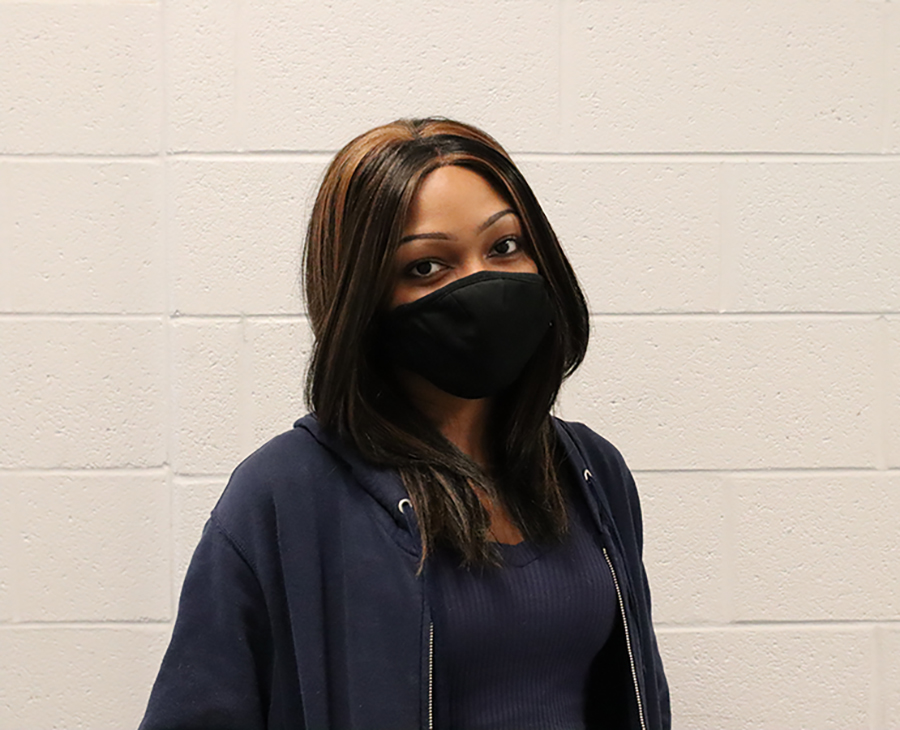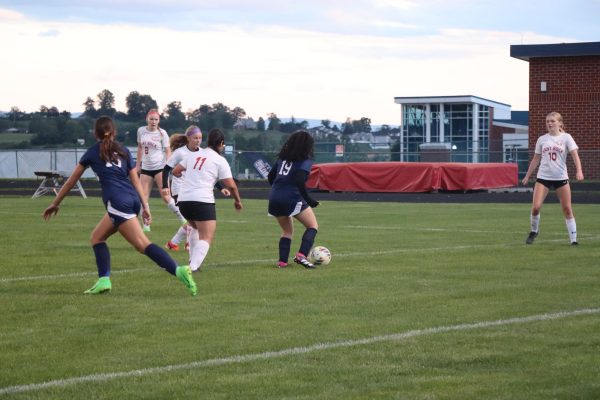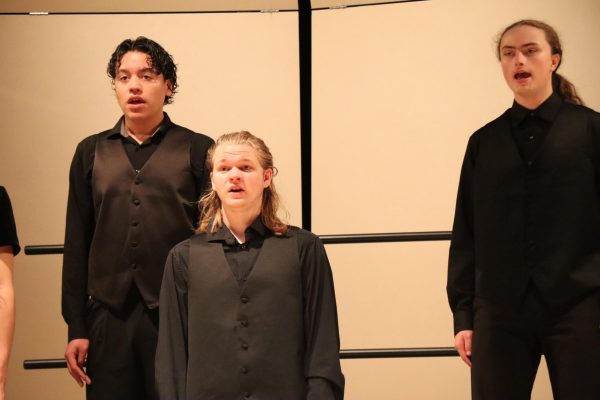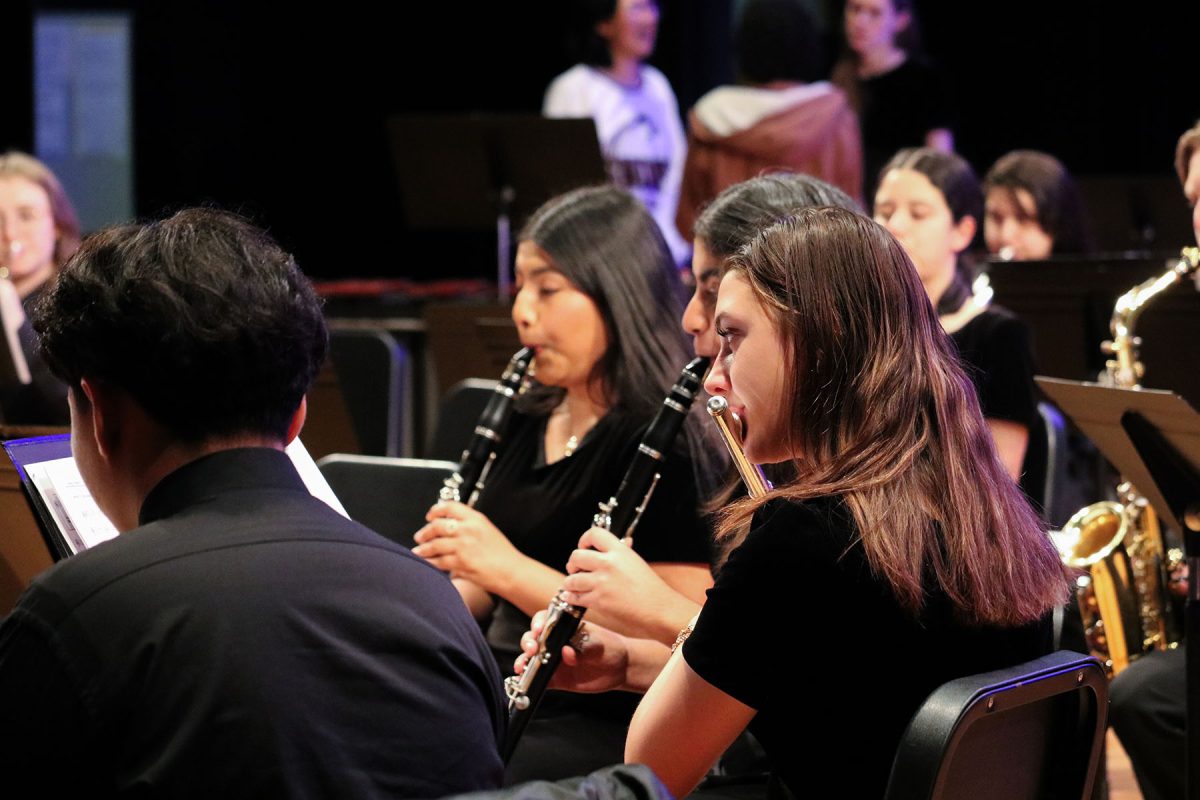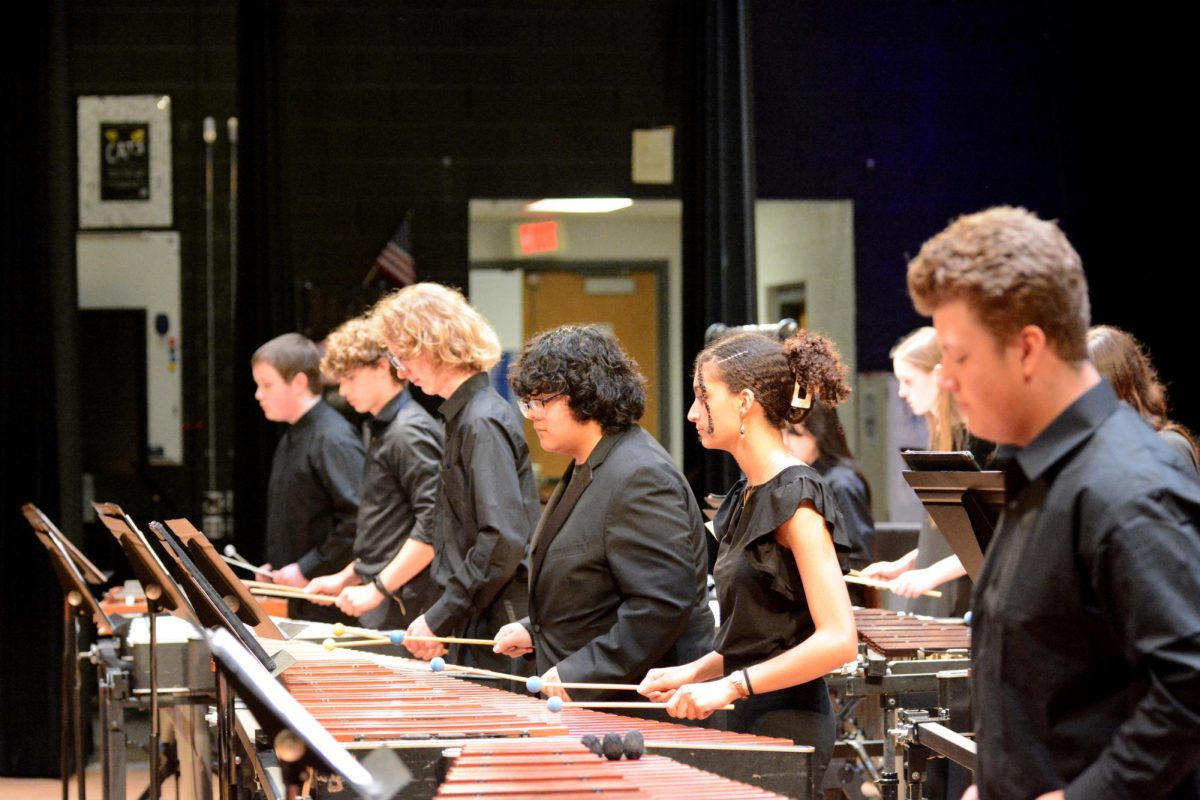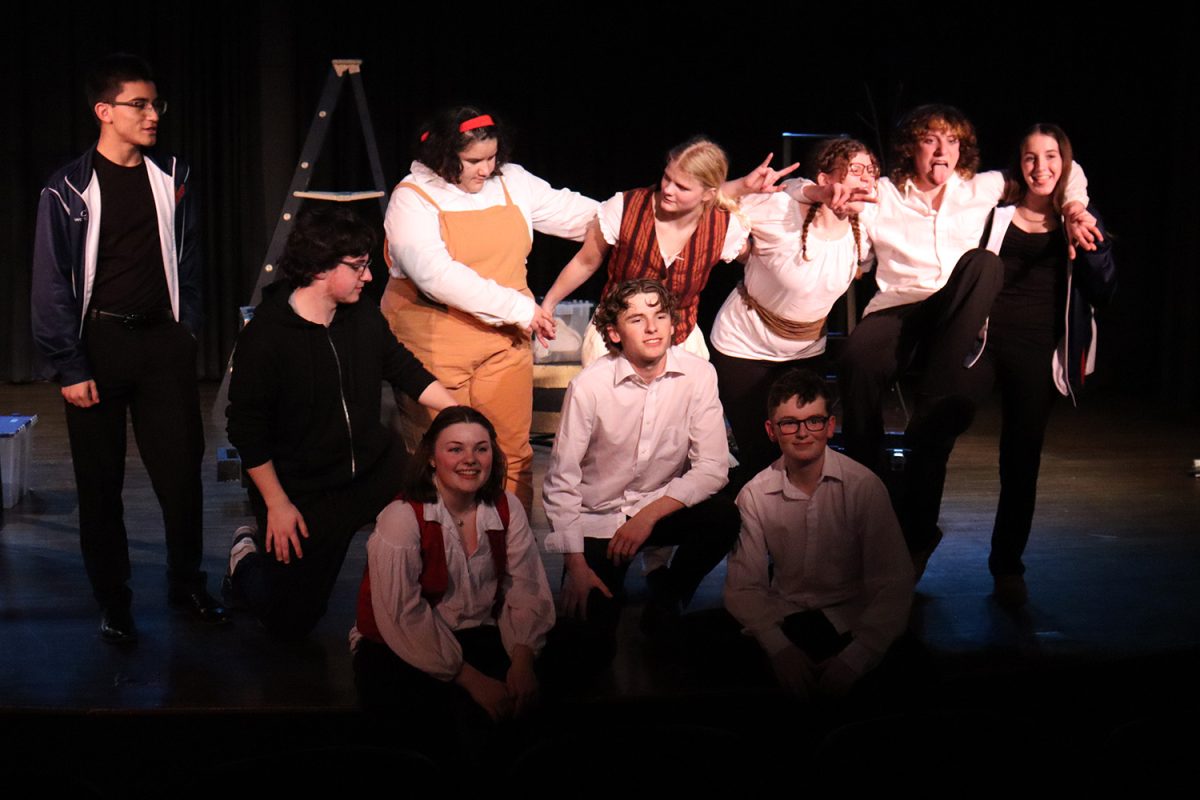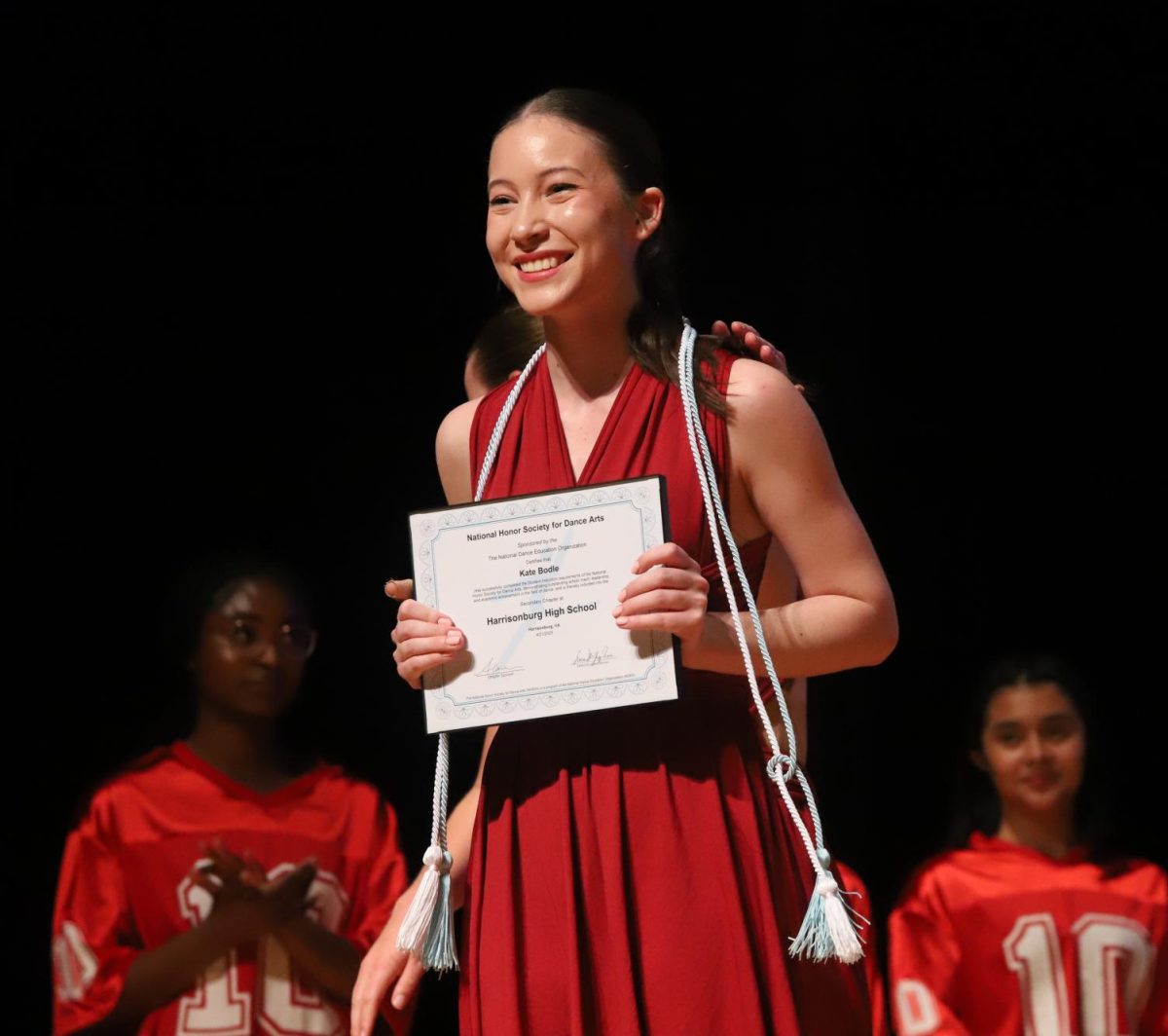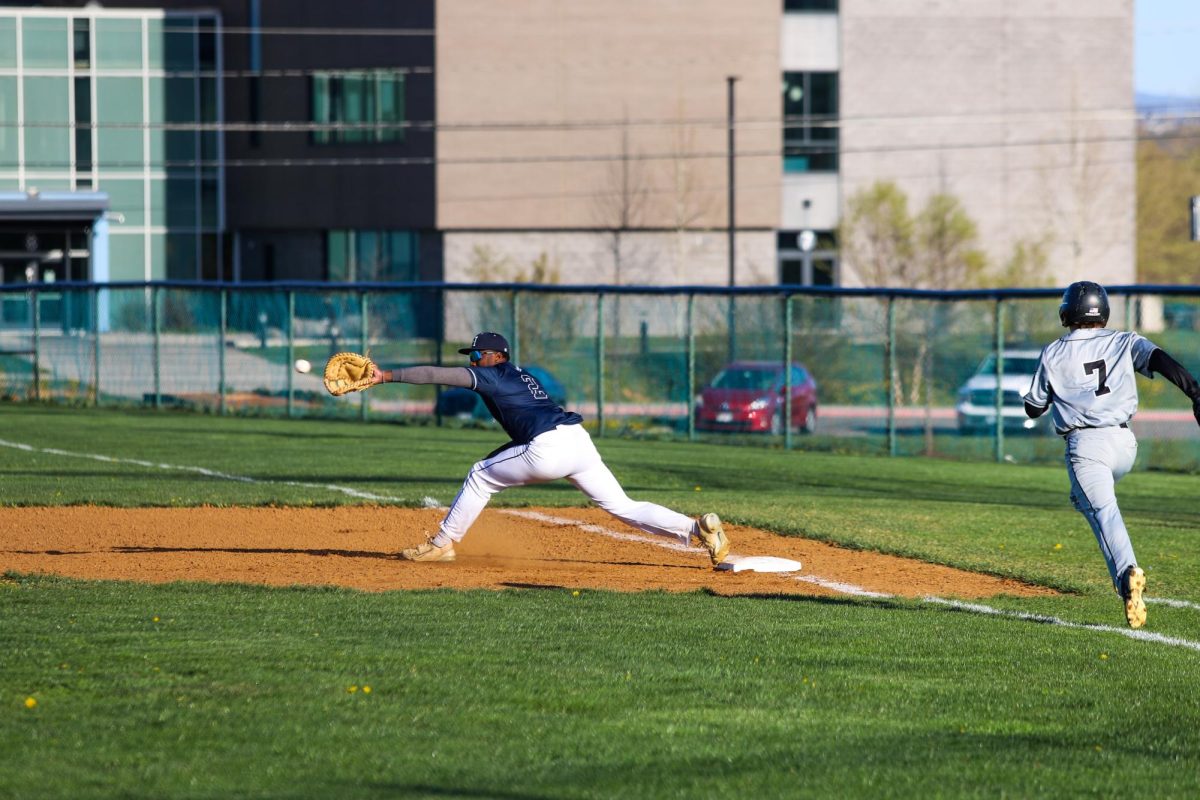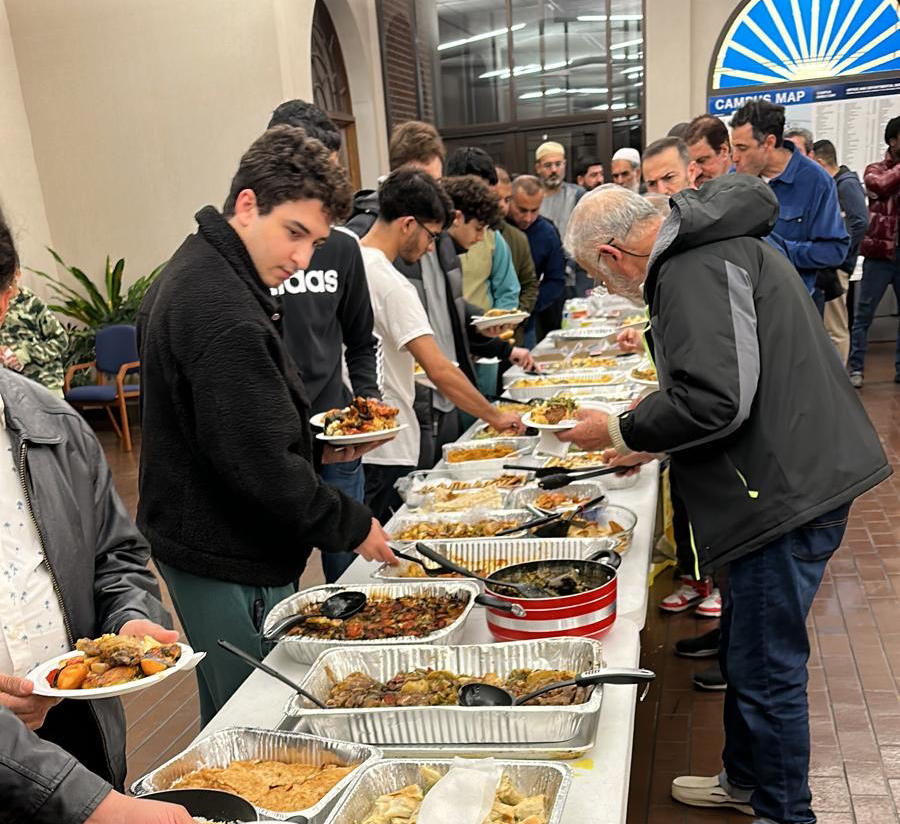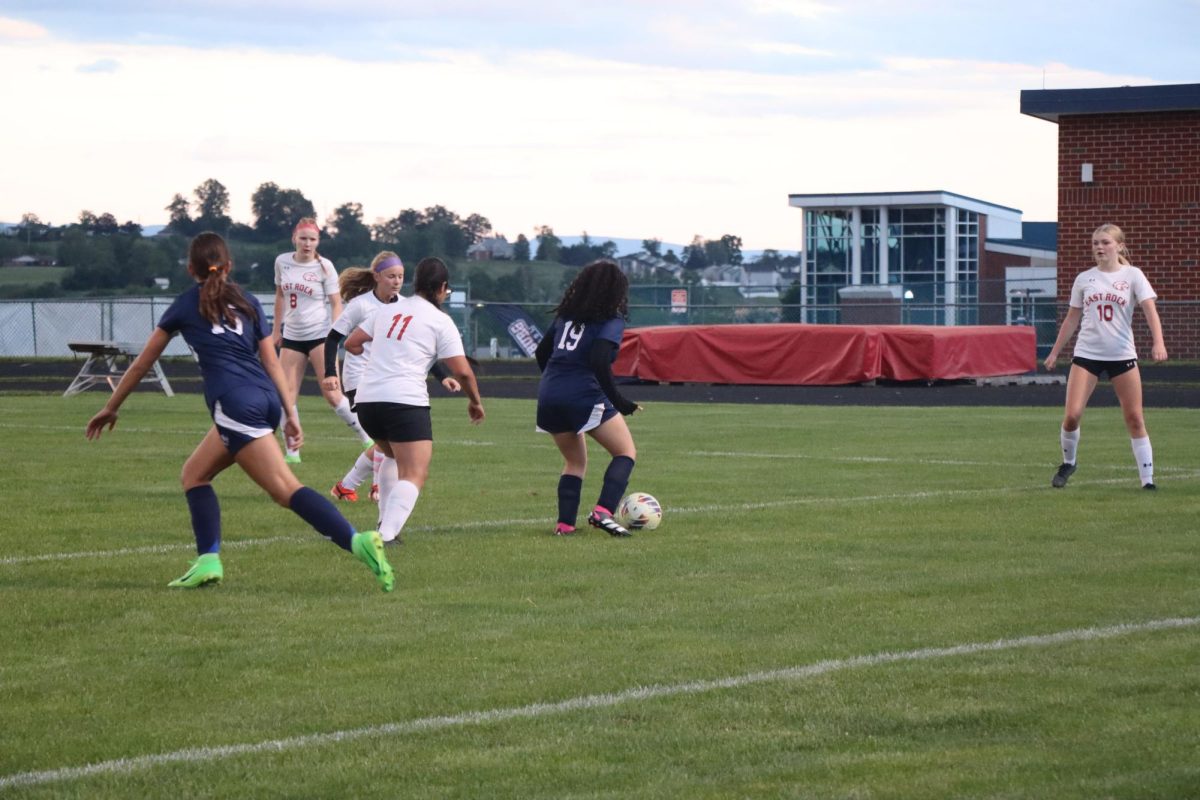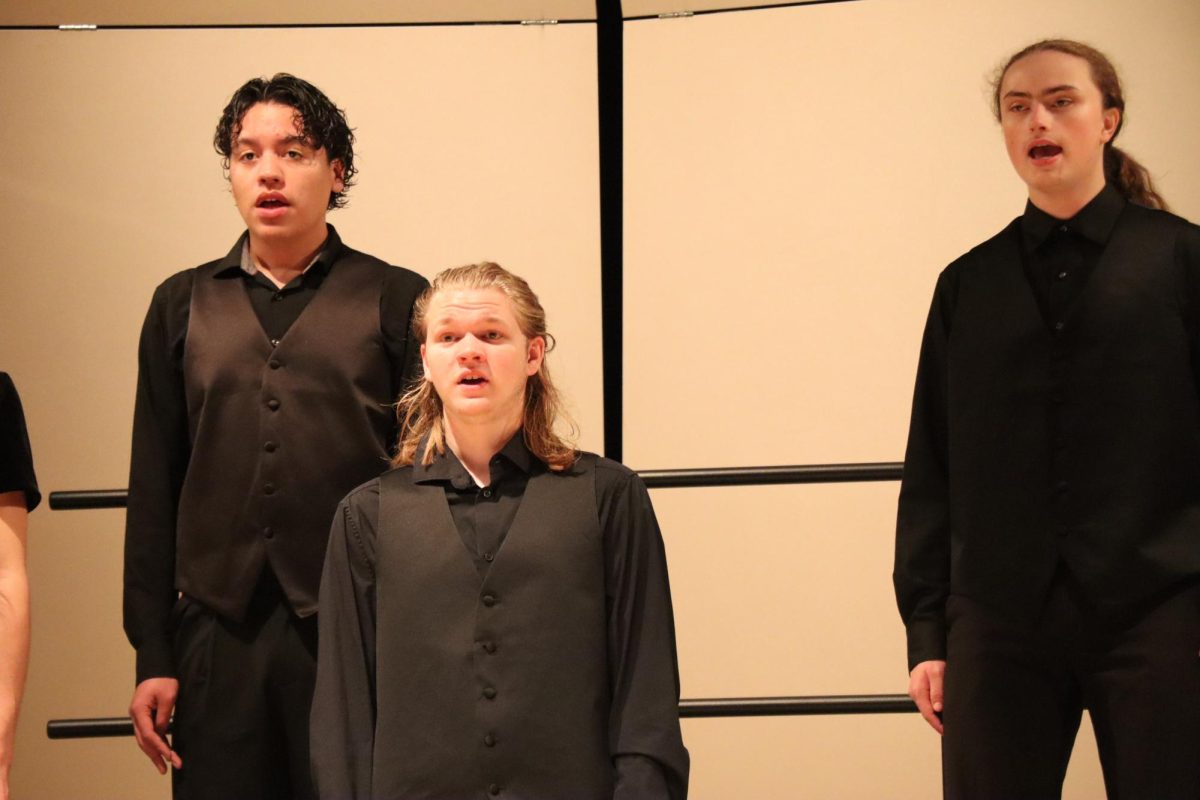Mercado-Santana adjusts to life in Harrisonburg, moving from Hawaii
After moving here nine months ago, Junior Solana Mercado-Santana has adjusted to life in Harrisonburg.
November 30, 2021
Junior Solana Mercado-Santana moved to Harrisonburg about nine months ago after living on the Hawaiian islands her whole life.
“My grandparents emigrated from Puerto Rico to Hawaii. My mom was born in Hawaii, but she grew up in [both] Virginia and Hawaii. I was born and raised in Hawaii, but [it’s a very] expensive [place] to live. Since [my mom] was raised in Virginia, [that’s why we chose to move back here],” Mercado-Santana said.
Even though Mercado-Santana was born and raised in Hawaii, she does not consider herself Hawaiian, most of her family is Puerto Rican.
“I have Hawaiian people in my family by marriage, but most of my family is Puerto Rican. I’m [also] Dominican, Black, French and German,” Mercado-Santana said. “My grandmother had an arranged marriage by her great grandmother. That’s where I get the French and German [side from]. They set them up because he was white and she was perceived as Black because Puerto Rican people are darker, so they wanted her to be with somebody who was white [and had] money.”
With an unique background, Mercado-Santana has been surrounded by several different languages and has picked up on a few.
“My grandparents didn’t teach my mom or I Spanish because they used it as how they kept their secrets. I’m in [a] Spanish class [now] and I’m teaching my mom Spanish as well, but she knows more than me because [she] kind of picked up on it, since she was raised by them. I’m not fluent [in Hawaiian], but I know enough to [be able to] talk to people,” Mercado-Santana said.
Throughout Mercado-Santana’s life, she and her family moved between the Hawaiian islands often.
“I lived [on a lot of] different islands. [We moved because of] family problems [such as] my great grandma needing to be taken care of,” Mercado-Santana said.
Hawaii is made of eight major islands that each have their own name: Hawai’i, Maui, Koho’olawe, Moloka’i, Lana’ī, O’ahu, Kaua’i and Ni’ihau. Only one of the islands is named Hawaii and it is often pronounced wrong by people in the US.
“People think Hawaii is all of the islands, but really it’s just one. Every island has its own name, but since everyone thinks all the islands are Hawaii, we made a new name for the first island, it’s just called ‘Big Island.’ That’s the only island that is actually Hawaii. [Also], everyone says Hawaii wrong. I just say it like that because I’m here, but it’s not with a ‘w.’ All Hawaiian words that have a ‘w’ in it is [actually] a ‘v’ sound. I don’t [pronounce it correctly] here [though] because [no one] will know what I’m talking about,” Mercado-Santana said.
Maui was her favorite place to live because of the relationships she built. However, Mercado-Santana has not stayed in touch with many of those friends after moving.
“I had the best friendships [in Maui]. When you move, people kind of just forget about you. I only have one friend that I still talk to. She’s been my best friend since second grade. I go back to Hawaii every summer. I just moved here about nine months ago and I went back to Hawaii just this summer for a whole month and stayed with family,” Mercado-Santana said.
Growing up in Hawaii caused many traditions to be integrated into her family and way of life. This includes her name which is considered a person’s power in Hawaiian culture.
“I’m not Hawaiian, but since I was raised [there], I have a lot of their cultures embedded into my family. My name is very long. ‘Mana’ [means] power in Hawaiian. Whatever your name is, that’s what you’re going to be in life. My full name is Cynthia Solana Storm Makalani Kenā Manaō Mahūahūa Mercado-Santana,” Mercado-Santana said.
Each part of Mercado-Santana’s name includes different cultures and has a different meaning that relates to what she will be in life.
“My name, Cynthia, is my grandmother’s name, it [means] moon goddess. Solana is Spanish, it [means] sunshine. Storm [is] an English word and then the Hawaiian part [of my name] means ‘heavenly eyes that will go strong and flourish in life’ because I was born with my eyes open and a lot of babies aren’t. My grandmother named me that. When I get older, I’m going to take Cynthia [out of my name] or switch it with Solana because I never liked being called Cynthia. Nobody calls me that,” Mercado-Santana said.
When she moved to Virginia she started going by Solana, but in Hawaii she went by her middle name.
“They call me Makalani in Hawaii, that’s my middle name [which is] the ‘heavenly eyes’ part. ‘Maka’ is eyes and ‘lani’ is heavenly,” Mercado-Santana said.
Mercado-Santana is an only child, but she had a close friend that lived with her family for a period of time in Hawaii.
“I don’t have any siblings, [but] I [did] have a ‘hānai’ [or] adopted sibling. We were so close in age that my mom basically adopted her. She was like my sister for a little bit growing up. We didn’t have the best relationship, [it was] very on the rocks. My mom and [I] are really close [though] and then [my] grandmother and [I] are close too, but she speaks more Spanish, so it’s harder for me to talk to her,” Mercado Santana said.
Moving from Hawaii to Virginia was a big adjustment for Mercado-Santana. There are few things that she has had to adapt to.
“We call all of our teachers auntie. Anyone that’s older than you, you call them auntie or ‘kumu,’ which is teacher in Hawaiian. [When] I came here I [called my teachers] auntie and they thought that I just called them that by accident, but it was on purpose. Even our bus drivers, anybody you know, you call them auntie or cousin because it’s like a big family there,” Mercado-Santana said.
Another difference was leaving her shoes on everywhere because it is respectful to take them off in certain situations in Hawaii.
“When I came here it was really weird to leave your shoes on everywhere. [In Hawaii], if it had carpet, we would take our shoes off at the door. Walking into people’s houses, even if you take them off and leave them at the door, we wouldn’t do that, [it has to be] before you even walk into the house. It’s disrespectful because your shoes are for outside,” Mercado-Santana said.
Additionally, bathroom and informational signs all being in English presented a challenge at first.
“‘Wahine’ means girl [in Hawaiian], so I [was] confused, I’m so used to everything being in Hawaiian. In Hawaii, everyone’s Hawaiian and English [language is] together, like in Miami they [speak] Spanglish, Spanish and English, it’s like that,” Mercado-Santana said.
As far as school goes, there was a lot for Mercado-Santana to get used to.
“[In Hawaii], they have two breaks in school. They have recess all the way up to high school and our lunches are longer. [Also, HHS] is [a] closed campus, all the schools in Hawaii have two different buildings like colleges and you have to walk outside to go [to] each class. Since it’s so sunny, we don’t have to worry about the weather, that’s why you can walk in between each class. There was [also] no air conditioning, so I’m cold all the time [here]. When I first came, my teeth were chattering in every class. People were like, ‘You’re being dramatic,’ and I don’t want to be like, ‘Well I’m from Hawaii,’ because everyone already knows that,” Mercado-Santana said.
Due to the weather, there wasn’t a dress code at the past schools Mercado-Santana attended in Hawaii either.
“I always wore flip-flops. [People wore] flip-flops, shorts and tank tops [to school] because it was so hot. We didn’t have a dress code,” Mercado-Santana said.
COVID-19 restrictions for school and travel are also different from Hawaii to Virginia. Mercado-Santana did not have virtual school for a period of time, she just didn’t have to go to school at all.
“They’re a lot stricter because it’s such a small place, if one person gets [COVID-19, then] we’re all going to. Our school got shut down pretty quick [last year]. We didn’t even have [virtual] school. Half the time, we didn’t go at all. They shut down the planes and everything. We couldn’t go anywhere,” Mercado-Santana said.
Mercado-Santana is currently taking a freshman level history class because they only taught Hawaiian history when she lived there. However, she is thankful she learned the culture and history because the stories are not very well known anymore.
“Nobody really knows Hawaiian history. White people imprisoned our queen, killed a lot of the Hawaiians and stole our land. They forced us to not learn to read or write our language. They made us start wearing clothes, they used to just wear the hula skirt and then your hair would be very long. Nobody in Hawaii cuts their hair because it’s part of their culture. They forced them to cut their hair and wear different types of clothes. They weren’t allowed to speak Hawaiian or see their family, [really] anything that was related to their culture at all. Now, a lot of the culture you see from Hawaii like [in movies is very] Americanized because nobody really knows that much of our culture because it was taken away from us,” Mercado-Santana said.
She is also used to celebrating certain holidays that are not celebrated in the United States, such as May Day.
“In Hawaii they have May Day, it’s where everyone dresses up in Hawaiian attire and we all dance. The schools have to do it, we do it until fifth grade every year. Some schools do it until middle school, some don’t. All the way until high school, we have to do a Hawaiian chant every morning [though]. It talks about our path, how we’re still growing and we’re strong. [It says] we’re going to do [well] in school and in life in general,” Mercado-Santana said.
There is a difference between Hawaiian culture that is used and practiced now and old or traditional Hawaiian.
“[My adopted sister] is Hawaiian and Tongan. She knows Hawaiian, she dances hula, she knows old Hawaiian. There’s Americanized Hawaiian and then there’s old Hawaiian which is crazy if you know that because it’s very hard to learn,” Mercado-Santana said.
Mercado-Santana did a form of dance called Tahitian when she lived on the islands, but she doesn’t do it anymore since moving to Virginia.
“I do ballet. I did Tahitian in Hawaii, there’s hula and then there’s Tahitian, they’re kind of one in the same, [but] Tahitian is way harder. Hula is very slow paced, it has a lot of hip movement, [but] we don’t wear grass skirts or coconut bras. That’s [for] the little kids when they dance, they wear [those]. When you’re grown, it’s like belly dancing. [Tahitian dancers wear] colorful [skirts and headresses], but it’s not grass skirts. We use the lei, but our leis are ‘haku leis,’ which are leis that go over your head. The leis that go around your neck, we give those to tourists, but really it’s not for that. [They’re] only for very special occasions. I do ballet here [because] there’s not really anywhere to do Tahitian,” Mercado-Santana said.
Another tradition from Hawaii are ‘poi balls’ which are something that you dance with. They are now used for entertainment just like hula, but they used to be used for celebrations such as birthdays.
“‘Poi’ is a mashed purple sweet potato. The purple sweet potato is called ‘taro’ and ‘poi’ is the mass version of ‘taro.’ It’s just a string that has two balls at the end and you dance with it. An ‘ipu’ is a drum [made of] a gourd [that is] dried out. I say it’s a drum because you bang on it with your hand, but it’s not really shaped like a drum. It’s hollowed out, you hold it by the neck, sit on the floor, tap it on the floor and bang it with your hand. A lot of people do it at once, so it’s really loud,” Mercado-Santana said.
One aspect of living in Virginia that Mercado-Santana did not get to experience previously is the diversity. She was never surrounded by other Hispanic people until moving here.
“There [aren’t] any Hispanics in Hawaii, there’s Polynesians which is Hawaiian, Samoans and Tongans. Then there’s Asians, a lot of Filipinos [and] Chinese people [live there], but there’s not really any Black, White or Hispanic people. So coming here, there’s actual Puerto Ricans here that I can be friends with,” Mercado-Santana said. “[Hawaii is] diverse, but it’s not the same.”



